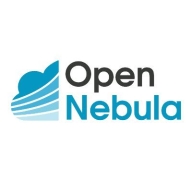


CloudCheckr and OpenNebula compete in the cloud management domain, each excelling in distinct areas. Based on feature diversity and application breadth, OpenNebula appears to have the upper hand, favored for its advanced capabilities.
Features: CloudCheckr provides comprehensive financial management, robust cost optimization tools, and detailed billing reports. It is also known for its simplicity and excellent multi-cloud integration. OpenNebula stands out with versatile infrastructure management, adaptable virtualization solutions, and powerful orchestration capabilities.
Room for Improvement: CloudCheckr could improve its scalability for larger enterprises, offer more customization in reporting, and enhance its dashboard analytics. OpenNebula might benefit from simplifying its initial setup, broadening third-party integrations, and streamlining its customization options for broader appeal.
Ease of Deployment and Customer Service: CloudCheckr is praised for straightforward deployment and strong customer service, simplifying new implementations. OpenNebula, although presenting a more intricate setup due to extensive customization options, offers efficient support channels to facilitate deployment for adaptable environments.
Pricing and ROI: CloudCheckr's competitive pricing and rapid ROI due to cost-saving features attract budget-conscious users. OpenNebula, requiring a higher initial investment, offers substantial ROI over time through enhanced efficiency and scalability. Its extensive capabilities deliver superior long-term value compared to CloudCheckr's immediate cost benefits.



IBM Turbonomic offers automation, planning, and right-sizing recommendations to streamline resource management, improve efficiencies, and optimize costs across virtualized environments and cloud platforms.
IBM Turbonomic is valued for its capability to optimize resource allocation and monitor virtual environments efficiently. It facilitates automated decision-making in VM sizing, load balancing, and cost optimization for both on-premises and cloud deployments. Users can leverage insights for workload placement, ensure peak performance assurance, and effectively right-size across VMware and Azure. The ongoing transition to HTML5 aims to improve visual and navigational ease, while expanded reporting features are anticipated. Opportunities for improved training, documentation, and integrations enhance platform usability and functionality.
What Are the Key Features?In finance, IBM Turbonomic aids in maintaining platform efficiency during market fluctuations. Healthcare organizations leverage its capability for resource optimization during high-demand periods to enhance patient care support. Retailers use it for planning in peak seasons, ensuring resources align with fluctuating demand to maintain performance continuity.
OpenNebula provides the most simple but feature-rich and flexible solution for the comprehensive management of virtualized data centers to enable private, public and hybrid IaaS clouds. OpenNebula interoperability makes cloud an evolution by leveraging existing IT assets, protecting your investments, and avoiding vendor lock-in.
OpenNebula is a turnkey enterprise-ready solution that includes all the features needed to provide an on-premises (private) cloud offering, and to offer public cloud services.
We monitor all Cloud Management reviews to prevent fraudulent reviews and keep review quality high. We do not post reviews by company employees or direct competitors. We validate each review for authenticity via cross-reference with LinkedIn, and personal follow-up with the reviewer when necessary.